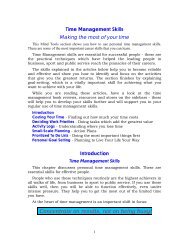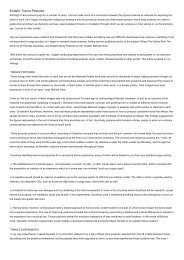Executive Coaching - A Guide For The HR Professional.pdf
Executive Coaching - A Guide For The HR Professional.pdf
Executive Coaching - A Guide For The HR Professional.pdf
You also want an ePaper? Increase the reach of your titles
YUMPU automatically turns print PDFs into web optimized ePapers that Google loves.
<strong>Executive</strong> Breakaway Section 193<br />
.................................<br />
sources can be very helpful to the coach, particularly at<br />
the start of a coaching program, because it provides<br />
insight into how you, the client, are being perceived by<br />
various parts of the organization.<br />
• Observations of you, the client. Experienced coaches<br />
have skills in observing and recording behavior, and<br />
the information gathered from direct observations of<br />
you during meetings, phone calls, and presentations<br />
can be very useful. <strong>The</strong> coach may also ask to see written<br />
materials from you such as emails. All of this can<br />
provide powerful real-world data, especially when<br />
combined with data from assessments.<br />
How much historical data to include? This depends on the<br />
nature of your issues. It can be really helpful for the coach to<br />
understand client behaviors that may have a long history. And it<br />
can be helpful for you to reflect back and gain greater selfawareness<br />
and insight. However, the focus of the coaching should<br />
be on how the behavior will become more adaptive in the present<br />
and future.<br />
What You Should Know About Multi-Rater Feedback<br />
Multi-rater feedback can be used to support coaching, either to help<br />
a client develop his or her potential or to address a performance<br />
concern. Such data can be useful for identifying development needs<br />
of future leaders. It is helpful for communicating behaviors consistent<br />
with new organizational values or principles or to provide<br />
senior leaders with valid data so they can make fine-tuned adjustments<br />
to their leadership styles. Typically, results are shared only<br />
with a client, who now “owns” the data.<br />
<strong>Executive</strong> <strong>Coaching</strong>. Copyright © 2005 by John Wiley & Sons, Inc. Reproduced by<br />
permission of Pfeiffer, an Imprint of Wiley. www.pfeiffer.com

















